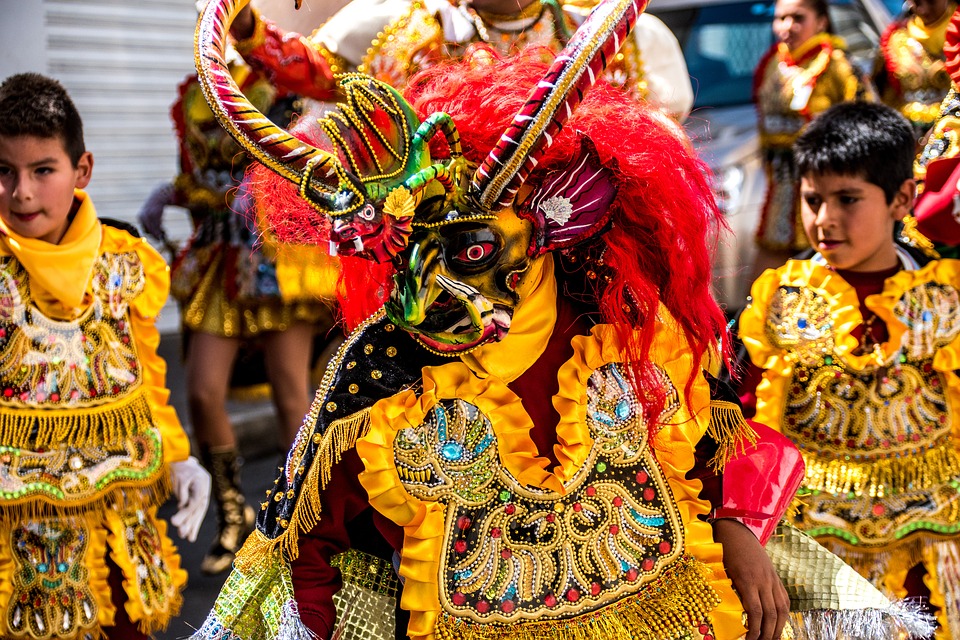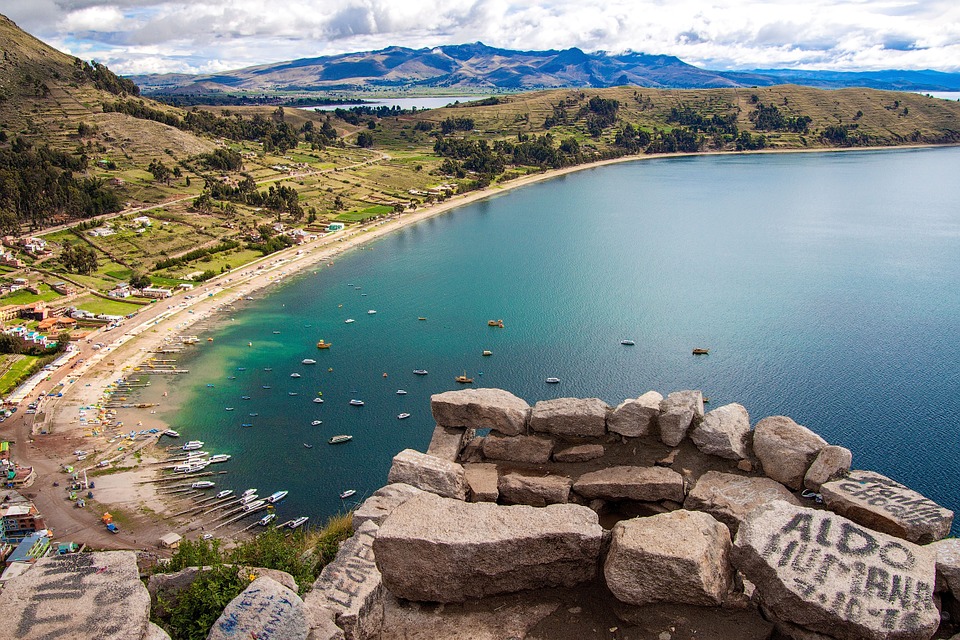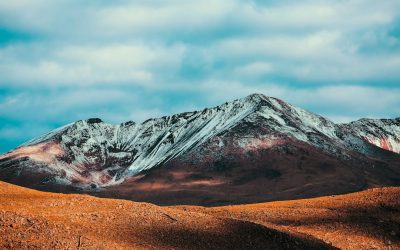Bolivia
(Estado Plurinacional de Bolivia (Plurinational State of Bolivia))








Capital of Bolivia : La Paz (Administrative), Sucre (Constitutional)
Population (Estimated July 2012): 10,290,003
Area: 1,098,581 km2 or 424,164 mi2
Currency: Boliviano (Bs)
Official Language: Spanish, Quechua, Aymara with several native languages also spoken.
Political Information: Unitary Presidential Republic
Official Religion: No Official Religion (approximately of 95% the population is Roman Catholic and 5% are Protestant)
Highest Mountain: Nevado Sajama at 6,542m or 21,463ft
GDP Official Exchange Rate (OER is more precise at gauging a countries economic power)
(Estimated 2011): $24.4 billion (US$) or £14.64 billion (GBP)
GDP (OER) Per Capita (per member of the population estimated 2011): (US$) or (GBP)
GDP Purchasing Power Parity (PPP is good for gauging living conditions and use of resources but not as accurate as OER. This data has been calculated based on the sum value of all goods and services produced in the country valued at prices prevailing in the United States)
(Estimated 2011): $51.46 billion (US$) or £30.876 billion (GBP)
GDP (PPP) Per Capita (per member of the population estimated 2011): $4,800 (US$) or £2,880 (GBP)
Time Zone: -4:00
Counties/Provinces/States: (departments or departamentos) Beni, Chuquisaca, Cochabamba, La Paz, Oruro, Pando, Potosi, Santa Cruz, Tarija
Leaders:President Juan Evo MORALES Ayma (since 22 January 2006); Vice President Alvaro GARCIA Linera (since 22 January 2006)
Sources: CIA World Fact Book, Encyclopaedia Britannica.
Bolivia, located in the heart of South America, is a country known for its rich cultural heritage and diverse landscapes. With a population of over 11 million people, Bolivia is home to a variety of ethnic groups, each with their own unique traditions and languages. From the towering peaks of the Andes to the lush rainforests of the Amazon Basin, Bolivia offers visitors a chance to explore a wide range of natural wonders. In this article, we will delve into the geography, history, economy, society, and culture of Bolivia, highlighting its many facets and complexities.
Geography and Climate: From the Andes to the Amazon Rainforest
Bolivia’s geography is incredibly diverse, with landscapes ranging from snow-capped mountains to dense rainforests. The Andes mountain range runs through the western part of the country, reaching heights of over 6,000 meters. This region is known as the Altiplano, a high plateau that stretches across much of Bolivia. The Altiplano is home to Lake Titicaca, the highest navigable lake in the world, as well as numerous indigenous communities.
To the east of the Andes lies the Amazon Basin, a vast expanse of tropical rainforest that covers over half of Bolivia’s territory. This region is incredibly biodiverse, with thousands of plant and animal species found nowhere else on Earth. The Amazon Basin is also home to indigenous communities who have lived in harmony with their environment for centuries.
In contrast to the Andes and the Amazon Basin, the Chaco region in southern Bolivia is characterized by its dry and arid climate. This region is sparsely populated and is known for its vast plains and unique wildlife.
Bolivia’s climate varies greatly depending on altitude and location. The highlands experience cold winters and mild summers, while the lowlands have a tropical climate with high temperatures and heavy rainfall. These diverse climate zones have a significant impact on Bolivia’s flora and fauna, with different species adapted to thrive in each region.
History and Politics: The Evolution of Bolivia’s Identity and Governance
Bolivia has a rich history that dates back thousands of years. Before the arrival of the Spanish in the 16th century, the region was home to several advanced civilizations, including the Tiwanaku and Inca empires. These civilizations left behind impressive architectural ruins and a legacy that is still celebrated today.
During the colonial period, Bolivia was part of the Viceroyalty of Peru and was known for its rich silver mines. The Spanish exploited these mines and forced indigenous people to work in harsh conditions. However, the indigenous population also played a crucial role in Bolivia’s struggle for independence, which was achieved in 1825.
Since gaining independence, Bolivia has experienced periods of political instability and military rule. In recent decades, indigenous movements have gained prominence and have fought for greater representation and rights. Evo Morales, an indigenous leader, became Bolivia’s first indigenous president in 2006 and held office until 2019.
Bolivia’s political history has been marked by challenges in establishing stable governance and addressing social inequalities. The country has made significant progress in recent years, but there are still ongoing struggles to ensure equal representation and opportunities for all citizens.
Economy and Industry: Agriculture, Mining, and Tourism in Bolivia
Bolivia’s economy is diverse, with agriculture, mining, and tourism playing significant roles. The country is known for its agricultural products such as quinoa, soybeans, coffee, and coca leaves. Agriculture employs a large portion of the population, particularly in rural areas.
Mining is another important sector of Bolivia’s economy, with the country being rich in natural resources such as tin, silver, zinc, and lithium. The mining industry has faced challenges in terms of environmental impact and labor conditions, but efforts are being made to promote sustainable practices and improve working conditions.
Tourism is a growing industry in Bolivia, with visitors drawn to the country’s natural and cultural attractions. The Salar de Uyuni, the world’s largest salt flat, is a popular destination, as are the colonial cities of Sucre and Potosi. Bolivia’s rich indigenous culture and vibrant festivals also attract tourists from around the world.
Bolivia has made efforts to promote sustainable development and reduce poverty. The government has implemented social programs aimed at improving access to education, healthcare, and basic services. However, challenges remain in terms of infrastructure, inequality, and economic diversification.
Society and Culture: Languages, Ethnicities, and Traditions in Bolivia
Bolivia is a multicultural country with a diverse population that includes indigenous peoples, mestizos (people of mixed indigenous and European ancestry), and people of European descent. The country recognizes 36 indigenous languages, with the most widely spoken being Quechua, Aymara, and Guarani. Spanish is also an official language.
Each ethnic group in Bolivia has its own unique traditions and customs. Traditional music and dance play a significant role in Bolivian culture, with festivals such as Carnaval de Oruro showcasing vibrant costumes and lively performances. Indigenous communities also maintain their own spiritual beliefs and practices, often blending elements of Catholicism with traditional rituals.
Despite its cultural richness, Bolivia faces social challenges such as inequality and discrimination. Indigenous communities have historically been marginalized and have faced discrimination in areas such as education, healthcare, and employment. Efforts are being made to address these issues and promote inclusivity and equal rights for all citizens.
Education and Healthcare: Challenges and Progress in Bolivia
Bolivia’s education system faces challenges in terms of access, quality, and infrastructure. Many rural areas lack schools and qualified teachers, making it difficult for children to receive a quality education. The government has implemented programs to improve access to education, particularly in rural areas, but there is still work to be done.
Similarly, Bolivia’s healthcare system faces challenges in terms of access and quality of care. Many rural communities lack access to healthcare facilities and trained medical professionals. The government has implemented initiatives to improve healthcare services, particularly in remote areas, but there is a need for continued investment and infrastructure development.
Infrastructure and Transportation: From the Salt Flats to the Yungas Road
Bolivia’s transportation infrastructure is diverse and includes roads, railways, and airports. The country has made efforts to improve connectivity and accessibility, particularly in remote areas. However, challenges remain, particularly in terms of road conditions and maintenance.
One of Bolivia’s most famous transportation challenges is the Yungas Road, also known as “Death Road.” This narrow and winding road connects La Paz to the Yungas region and is known for its dangerous conditions. Despite its reputation, the road attracts thrill-seeking tourists who enjoy mountain biking down its steep slopes.
Another unique transportation feature in Bolivia is the Uyuni Salt Flats. This vast expanse of salt is a popular tourist destination and can be traversed by 4×4 vehicles. The salt flats offer a surreal landscape that attracts photographers from around the world.
Food and Drink: Bolivian Cuisine and Beverages to Try
Bolivian cuisine is diverse and reflects the country’s multicultural heritage. Traditional dishes include salteñas (a type of baked pastry filled with meat or vegetables), pique macho (a hearty dish with beef, sausage, and vegetables), and silpancho (a breaded meat dish served with rice, potatoes, and a fried egg).
Bolivia is also known for its beverages, including chicha (a fermented corn drink), singani (a grape brandy), and mate de coca (a tea made from coca leaves). These beverages are often enjoyed during social gatherings and celebrations.
Food plays an important role in Bolivian culture and is often shared with family and friends. Traditional recipes are passed down through generations, preserving the country’s culinary traditions and promoting a sense of community.
Tourism and Adventure: Exploring Bolivia’s Natural and Cultural Wonders
Bolivia offers a wide range of tourist destinations, from bustling cities to remote natural wonders. La Paz, the country’s capital, is known for its vibrant markets, colonial architecture, and stunning views of the surrounding mountains. The city is also a gateway to the Andes and offers opportunities for trekking and mountaineering.
Lake Titicaca, located on the border between Bolivia and Peru, is another popular tourist destination. The lake is known for its crystal-clear waters and floating islands, which are home to indigenous communities who maintain their traditional way of life.
One of Bolivia’s most famous attractions is the Salar de Uyuni, the world’s largest salt flat. This otherworldly landscape stretches as far as the eye can see and offers visitors a chance to take unique perspective-bending photographs. The nearby Eduardo Avaroa Andean Fauna National Reserve is also worth exploring, with its geysers, hot springs, and diverse wildlife.
Bolivia’s natural beauty also provides opportunities for adventure tourism. Trekking in the Cordillera Real mountain range, mountain biking down the Yungas Road, and rafting in the rivers of the Amazon Basin are just a few examples of the adrenaline-pumping activities available in Bolivia.
The country has made efforts to promote sustainable tourism and protect its natural and cultural heritage. Community-based tourism initiatives have been established to ensure that local communities benefit from tourism activities while preserving their traditions and environment.
Challenges and Opportunities: Bolivia’s Future in the Global Context
Bolivia faces various challenges in terms of economic development, social inequality, and political stability. The country’s economy relies heavily on natural resource extraction, which can have negative environmental and social impacts. There is a need for diversification and sustainable development to ensure long-term growth and reduce poverty.
Bolivia also faces social challenges, including inequality and discrimination. Indigenous communities continue to fight for their rights and representation, while women and marginalized groups face barriers to education, healthcare, and employment. Efforts are being made to address these issues, but there is still work to be done.
Despite these challenges, Bolivia has opportunities for growth and development. The country’s natural resources, including lithium reserves, present opportunities for economic diversification and renewable energy production. Bolivia’s cultural richness and natural beauty also make it an attractive destination for tourism and international investment.
In the global context, Bolivia plays a significant role in regional integration efforts and has strong relationships with neighbouring countries such as Brazil, Argentina, and Peru. The country is also a member of international organizations such as the United Nations and the Organization of American States.
As Bolivia looks towards the future, it must navigate these challenges and seize opportunities for sustainable development and inclusive growth. By harnessing its cultural richness, natural resources, and diverse population, Bolivia has the potential to become a thriving nation that celebrates its heritage while embracing progress.
History of Bolivia
Bolivia, a landlocked country in South America, has a rich and complex history that has shaped its present-day society and culture. From its pre-Columbian origins to the Spanish conquest and colonization, the struggle for independence, and the modern political...
Climate Zones of Bolivia: Different climate regions Of Bolivia
Bolivia, located in the heart of South America, is a country known for its diverse geography and climate. From the towering peaks of the Andes Mountains to the vast expanse of the Amazon rainforest, Bolivia is home to a wide range of climate zones. Understanding these...
Terrain and Topography of Bolivia: mountains, valleys, and plains.
Bolivia, located in the heart of South America, is a country known for its diverse and stunning landscapes. From the towering peaks of the Andes Mountains to the lush valleys of the Yungas and the vast plains of the Chaco, Bolivia’s terrain and topography are as...
Political Boundaries of Bolivia: Provinces, Districts, or Historical Boundaries.
Bolivia, located in the heart of South America, is a landlocked country with a rich and diverse cultural heritage. Understanding Bolivia’s political boundaries is crucial for comprehending the country’s governance, society, and international relations....
Natural Resources of Bolivia: Where Natural Resources are Located in Bolivia
Bolivia, located in the heart of South America, is a country blessed with abundant natural resources. Its diverse geography, which includes the Andes Mountains, the Amazon rainforest, and the vast plains of the Gran Chaco, provides a rich variety of resources that...
Cultural or Historical Sites of Bolivia: Important Cultural Landmarks or Historical Sites In Bolivia
Bolivia is a country rich in cultural heritage and diverse attractions. Located in the heart of South America, it is known for its stunning landscapes, ancient ruins, and vibrant traditions. From the magnificent ruins of Tiwanaku to the mystical charm of Lake...
Discovering the Wonders of Bolivia: A Journey Through South America’s Hidden Gem
Bolivia, located in the heart of South America, is a country known for its unique and diverse landscape. From the towering peaks of the Andes Mountains to the vast expanse of the Amazon rainforest, Bolivia offers a breathtaking array of natural wonders. Its topography...
















































